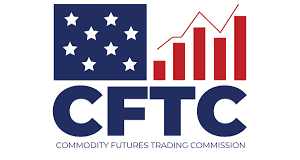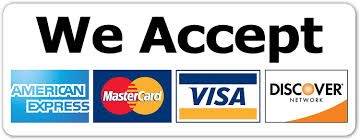
What are Micro E-mini Futures?
Micro E-mini futures are derivative contracts that allow traders to speculate on the future price of an underlying asset. They are a smaller version of the traditional E-mini futures, making them accessible to a wider audience of traders, including those with smaller accounts or those new to futures trading.
Micro E-mini futures have become a popular trading tool for investors worldwide. As a smaller, more accessible version of standard E-mini futures contracts, it provides unique benefits and risks that cater to a broad range of trading strategies.
In the dynamic world of trading, investors are always on the lookout for innovative tools that offer flexibility, accessibility, and profitability. Micro E-mini futures have emerged as an enticing option for traders worldwide. With their smaller contract sizes and distinct advantages, Micro E-mini futures provide opportunities for a diverse range of trading strategies. This article delves deeper into the world of Micro E-mini futures, exploring their features, benefits, and risks.
Micro E-mini futures represent a smaller and more accessible version of the traditional E-mini futures contracts. They track popular stock index benchmarks such as the S&P 500, NASDAQ-100, Russell 2000, and Dow Jones Industrial Average. With their reduced contract sizes, Micro E-mini futures offer an enticing proposition for traders with smaller accounts or those who are new to futures trading.

How do Micro EMini Futures Work?
Micro E-mini futures work similarly to their larger counterparts. Traders buy or sell these contracts, predicting whether the price of the underlying index will rise or fall. Each contract has a specified expiry date. At expiration, the contract can be settled for cash based on the index’s closing value, or it can be rolled over to a future date.
Symbols
Each Micro E-mini futures contract has a unique symbol for identification. For instance, the Micro E-mini S&P 500 futures contract is denoted as MES, and the Micro E-mini NASDAQ-100 futures contract is denoted as MNQ.
List
There are four types of Micro E-mini futures available for trading: Micro E-mini S&P 500 (MES), Micro E-mini NASDAQ-100 (MNQ), Micro E-mini Russell 2000 (M2K), and Micro E-mini Dow Jones Industrial Average (MYM).
Tick Value
The tick value represents the minimum price movement of a futures contract. For Micro E-mini futures, the tick value is $1.25 for the Micro E-mini S&P 500 (MES), and $0.50 for both the Micro E-mini NASDAQ-100 (MNQ) and Micro E-mini Dow Jones (MYM)1.
Examples
Consider a scenario where you believe the S&P 500 is going to rise. You could buy a Micro E-mini S&P 500 futures contract (MES). If the index rises as you predicted, you make a profit for each tick ($1.25) the index increases. Conversely, if the index falls, you lose $1.25 for each tick decrease.

Benefits of Micro E-Mini Futures Trading:
Micro E-mini futures offer several benefits. Let’s explore these advantages in detail.
Greater Risk Management and Precise Control over Market Exposure:
One of the key advantages of Micro E-mini futures is their smaller size. Being 1/10th the size of standard E-mini futures contracts, Micro E-minis enable traders to have more precise control over their market exposure. With smaller contract sizes, traders can allocate capital more efficiently, adjusting their positions according to their risk tolerance and market conditions. This flexibility in position sizing allows for enhanced risk management and better alignment of trading strategies with market dynamics.
High Liquidity and Efficient Trading:
Micro E-mini futures benefit from high liquidity, making them highly tradable instruments. High liquidity ensures that there are sufficient buyers and sellers in the market, resulting in tight bid-ask spreads. This means that traders can enter and exit trades at competitive prices, minimizing transaction costs. The efficient trading environment provided by Micro E-mini futures allows for seamless execution of trades and ensures that traders can act on their strategies without significant slippage.
Cost-Effective Way to Gain Broad Market Exposure:
Micro E-mini futures offer a cost-effective means to gain exposure to the broader market indices. As they have reduced contract sizes, traders can allocate capital across multiple Micro E-mini contracts to create a diversified portfolio. This diversification allows traders to participate in various sectors and indices simultaneously, spreading their risk and potentially benefiting from different market movements. Moreover, the reduced contract sizes make Micro E-minis accessible to traders with smaller accounts, democratizing market participation.
Extended Trading Hours and Global Market Access:
Micro E-mini futures provide traders with the advantage of extended trading hours. They can be traded nearly 24 hours a day, allowing market participants to react to news and events outside regular trading hours. This extended access to the market opens up opportunities to capitalize on international market movements and news releases that may impact the trading day. Traders can engage in active trading, hedging, or adjusting their positions in response to global developments, enhancing their potential for profits.
Furthermore, the global nature of Micro E-mini futures offers access to a wide range of markets around the world. Traders can trade Micro E-mini contracts tracking major stock indices such as the S&P 500, NASDAQ-100, Russell 2000, and Dow Jones Industrial Average. This global market access allows traders to diversify their portfolios and take advantage of opportunities in different regions, economies, and industries.
Risks Associated with Micro E-Mini Futures:
While Micro E-mini futures present exciting prospects, it is essential to understand the risks involved:
Leverage Risk: Like all futures contracts, Micro E-mini futures are leveraged instruments. This means that small market movements can result in significant gains or losses. Traders must exercise caution and employ proper risk management strategies to mitigate potential losses.
Market Volatility: Micro E-mini futures, like any other financial instrument, are subject to market volatility. Rapid price swings can occur, leading to unexpected losses or gains. Traders must be prepared for such volatility and adapt their strategies accordingly.
Contract Specifications:
Micro E-mini futures contracts have specific attributes that traders should be familiar with:
Contract Size: Micro E-mini futures contracts are 1/10th the size of their E-mini counterparts. For example, the Micro E-mini S&P 500 future has a contract size of $5 x S&P 500 Index value.
Tick Value: The tick value represents the minimum price movement of a futures contract. For Micro E-mini futures, the tick value is $1.25 for the Micro E-mini S&P 500 (MES) and $0.50 for both the Micro E-mini NASDAQ-100 (MNQ) and Micro E-mini Dow Jones (MYM).
Trading Micro E-Mini Futures:
To trade Micro E-mini futures, traders need a futures trading account with a broker that offers these contracts. It is crucial to understand the contract specifications, margin requirements, and trading hours associated with Micro E-mini futures. Developing a trading strategy, employing technical and fundamental analysis, and effectively managing risk are key elements for successful trading in Micro E-mini futures.
Micro E-Mini Futures vs. E-Mini Futures:
While Micro E-mini futures and E-mini futures are similar in many ways, the primary difference lies in their contract size. Micro E-mini futures are 1/10th the size of E-mini futures. This makes them more accessible to traders with smaller accounts and allows for more precise risk management. However, E-mini futures offer higher profit potential due to their larger contract size, which also means a higher risk.
Micro E-mini futures offer a flexible, accessible way to trade major stock indices. They allow for precise risk management, offer high liquidity, and are available for nearly 24-hour trading. However, like all investment vehicles, they come with risks and require a thorough understanding of the futures market.
What are Micro E-mini Stock Index Futures In Deeper Detail?
Micro E-mini stock index futures represent a fraction of the value of the corresponding index. For example, a Micro E-mini S&P 500 future represents 1/10th of the S&P 500 Index’s value. These contracts are traded on regulated exchanges, ensuring transparency and liquidity. Traders can use them to hedge their portfolios, speculate on market movements, or for long-term investments.
Conclusion
In conclusion, the benefits of Micro E-mini futures trading encompass greater risk management, high liquidity, cost-effective market exposure, and extended trading hours. These advantages make Micro E-mini futures an attractive option for traders seeking flexibility, efficiency, and the potential for profit in the dynamic world of trading. By harnessing the benefits of Micro E-mini futures, traders can navigate the markets with precision and seize opportunities across various indices and time zones.
See Our – Why use an Automated Trading System ATS
See Our Limited Time “Promo Offer” and see how you can become our Client!














